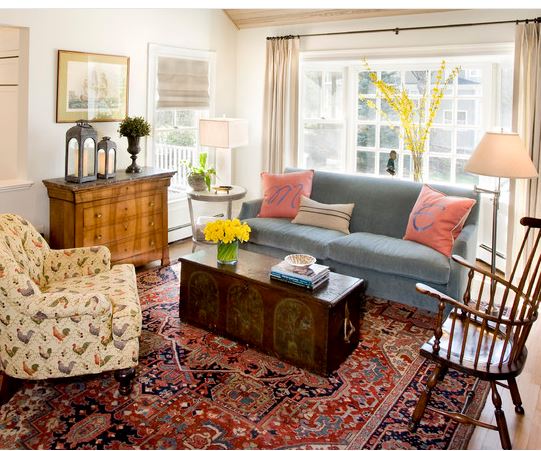Oriental rug
Classic Tabriz rugs (Oriental rugs) feature a central medallion with all-over designs of floral motifs, leaves, tendrils and vines, echoing the stylistic characteristics of the Ardabil rugs (Oriental rugs), yet each is a unique work. Herati (mahi) motifs are used as embellishments in medallion runners and rugs, but are also used as a single design in intricately-woven all-over patterns.
Tabriz rug (Oriental rug) is a type in the general category of Azerbaijan rugs/ Iranian rugs from the city of Tabriz, the capital city of East Azerbaijan Province in North West of Iran totally populated by Azerbaijanis. It is one of the oldest Oriental rug weaving centers and makes a huge diversity of types of Persian Oriental rugs. The range starts at Bazaar quality of 24 raj (Number of knots per length of 7 cm of the widths of the Oriental rug) and on up to the incredibly fine 110 raj. Raj are the units of knot density (it shows the fitness of the Oriental rug which based on the number of strings used for the foundation of the Oriental rug. Strings materials are usually made of cotton or silk which is used for very fine oriental rugs).
Antique Malayer Oriental rugs were created by individual weavers during the 1800s and early 1900s for the most part. Both allover field designs and central medallion Oriental rugs were woven in Malayer Oriental rugs. Natural dyes were employed in the best Malayer Oriental rugs with deep navy blue frequently used as a field color. The quality of Malayer Oriental rugs can vary from good to poor depending of pattern, quality of wool, age and knot count. Since there is only one shot of weft between each row of knots this shows every other warp which makes these Oriental rugs easy to spot. The colors and patterns of antique Malayer Oriental rugs are rich and varied. Tiny boteh motifs are often used to create tremendous allover patterns. Older antique Malayer Oriental rugs are excellent investments.
Antique Persian Heriz Oriental Rugs are named after the largest town in a district of over 30 villages, in the mountainous area of Northwest Persia, 50 miles east of Tabriz. Heriz Oriental rugs are Persian rugs from the area of Heris, East Azerbaijan in northwest Iran, northeast of Tabriz. Such oriental rugs are produced in the village of the same name in the slopes of Mount Sabalan. The pattern is almost always geometric, although some Heriz oriental rugs have an all-over layout often together with geometric floral motives and less frequently curvilinear floral motives. Heriz oriental rugs are durable and hard-wearing and they can last for generations.
The Heriz Oriental rug is now the Iron Rug of Iran. Heriz Oriental rugs are thick, tough, and often inexpensive that appeal strongly to the US market. The style of antique Heriz Oriental rugs and antique Serapi oriental rugs (both originating from the same region of Iran) is a paradigm for the traditional geometric designs of Northwest Iran. These distinctive rugs are woven with tribal weaves which accentuates the angles and boldness exhibited in the highly stylized floral motifs. Heriz Oriental rugs are the jeeps of the rug world – cheap to make, durable and easy to repair.
Sources:
www.spongobongo.com/
http://en.wikipedia.org/wiki/Malayer
http://www.houzz.com/photos/living-room/oriental-rug-






